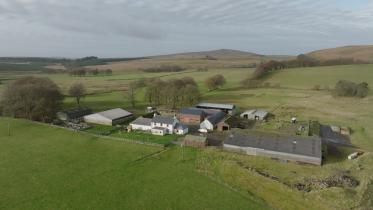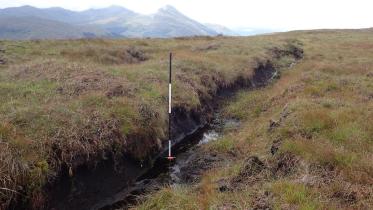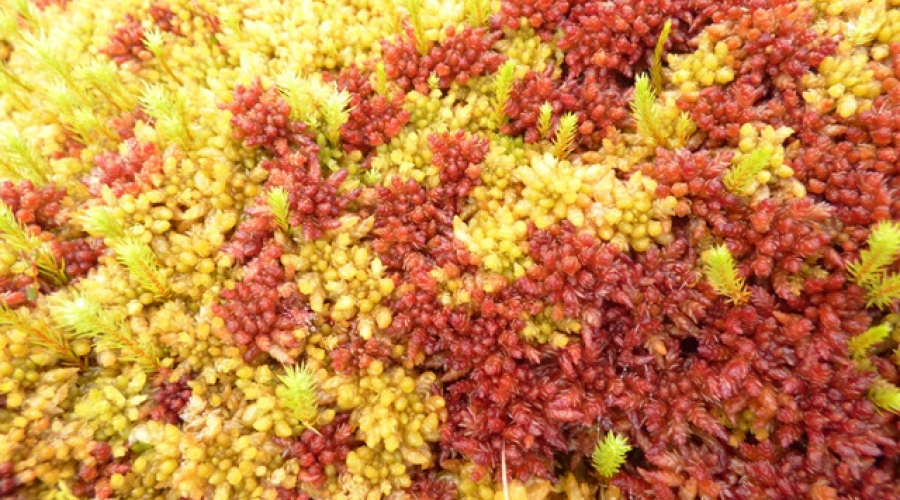
Peatland ACTION case study: What’s the connection between peat and local authority carbon targets?
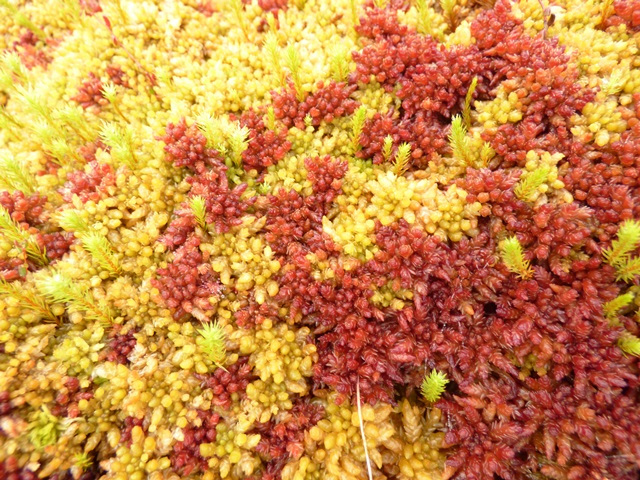
What’s the connection between peat and local authority carbon targets?
The answer lies in restoring areas of Duchal Moor to reduce the carbon emissions from the previously drained peatland.
Duchal Moor, Inverclyde Council
Inverclyde Council has completed the first phase of a three-year project to restore almost 800ha of peatland at Duchal Moor. The project is one of the largest ever undertaken by a local authority in Scotland.
The local authority sees peatland restoration on its land as a key part of its strategy to achieve net zero carbon emissions by 2045. The restoration work will also help them to mitigate flood risk in more built up areas further down the catchment.

©Peatland ACTION/Swift Films
The project
Duchal Moor, an area of elevated moorland in Inverclyde, was once part of a large grouse shooting estate, but is now a tenanted farm owned by Inverclyde Council.
Working with Glasgow Clyde Valley Green Network’s Peatland ACTION Officer, Guilia Spilotros, the council surveyed three of its farms to decide where best to carry out peatland restoration work. Duchal Moor, by far the largest, was chosen as the best candidate, partly because of the significant levels of peat erosion there. The site was criss-crossed by a huge network of land drains that had dried out the peat, making it increasingly prone to erosion.
The council was awarded £768,705 of funding from NatureScot Peatland ACTION to carry out the restoration work over three phases. It supported Inverclyde Council throughout Phase One of the project, not just with funding, but with expert advice and guidance from Guilia, and will continue to do so for Phases Two and Three. While the local authority has ‘in-house’ technical and construction knowledge, it says Guilia’s experience and understanding of the peatland restoration process has proved invaluable in delivering the project so far.
Peatland restoration at Duchal Moor
Before the project began the site was surveyed for peat depth, hydrology, and any archaeological features that would need to be taken into account. In the 1920s, when still a grouse moor, a unique, 7-mile ‘railway’ was built to transport shooting parties into the heart of the moor. Vestiges of the line still exist, and it was important as part of the work plan to ensure the contractors were aware of this so that it wasn’t damaged by the heavy machinery.
Phase One of the actual restoration work was done at Duchal Moor from January 2024. Over seven weeks an average of five excavators worked on the peatland, eventually blocking over 13.5km of artificial drains and 167m of gullies, and reprofiling 32m of peat hags to slow the flow of the water off the hills and prevent further erosion.

©Peatland ACTION/Swift Films
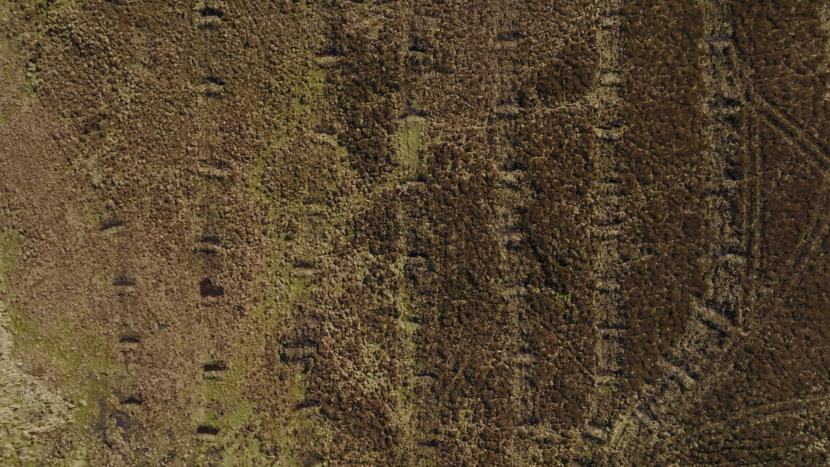
©Peatland ACTION/Swift Films
Phase Two is due to take place in 2024-25, with Phase Three scheduled for 2025-26. Once this has all been done almost 800ha of damaged peatlands will be on the road to recovery. This is one of the largest peatland restoration projects yet undertaken by a local authority in Scotland, and as a result Inverclyde Council won the COSLA Excellence Award in 2024.
The benefits
Hardridge, the tenanted farm on the moor, covers 1608ha in all, and is mainly grazed with sheep at a stocking density of around 0.8 per ha. The tenant, Ian Duff, says he is fairly optimistic about the effect of the restoration work, which he believes will lead to fewer lambs being lost in the drains and gullies, and provide easier access for quad bikes during gathering operations.
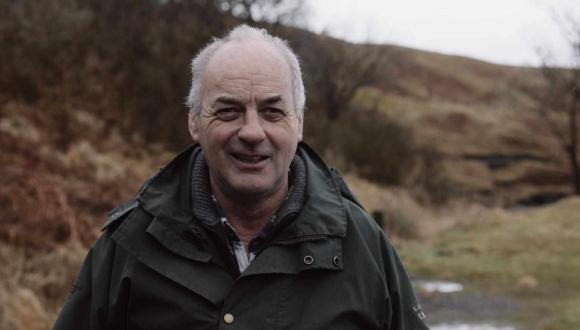
The contractors, McGowan Environmental Engineering, started working in peatland restoration a number of years ago, with just a few small-scale projects. Now they say they work in the sector for eight or nine months every year, providing jobs for 18-19 people to keep up with the ever-increasing demand. They anticipate that this project alone will take over 750 machine days to complete, for example.
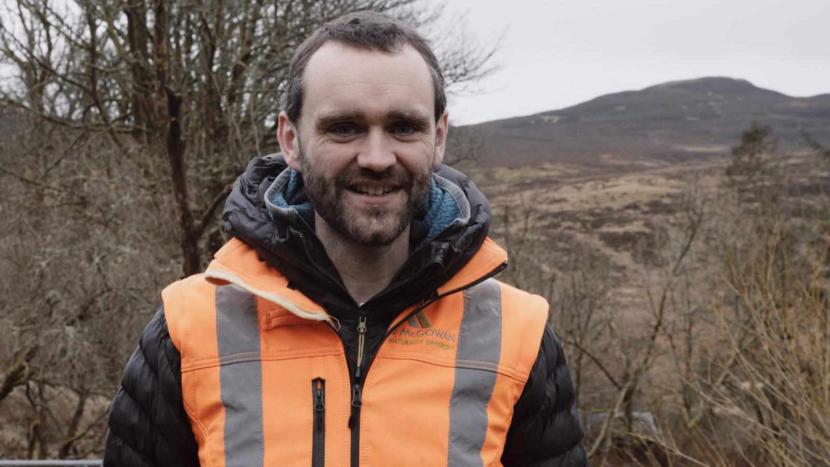
©Peatland ACTION/Swift Films
Successful outcomes
While a key reason for Inverclyde Council undertaking this work was helping it reach its climate change goals, it sees the work as bringing important additional benefits to people in the area. Healthier peatlands will increase the biodiversity of the site, help to slow the flow of water off the hills, reducing flooding downstream, and make the moor, part of the Clyde Muirshiel Regional Park, a more attractive and vibrant place for local communities and visitors to enjoy.
"Much of the upland countryside area of Inverclyde is peatland and restoring it can work wonders for reducing greenhouse gas emissions."
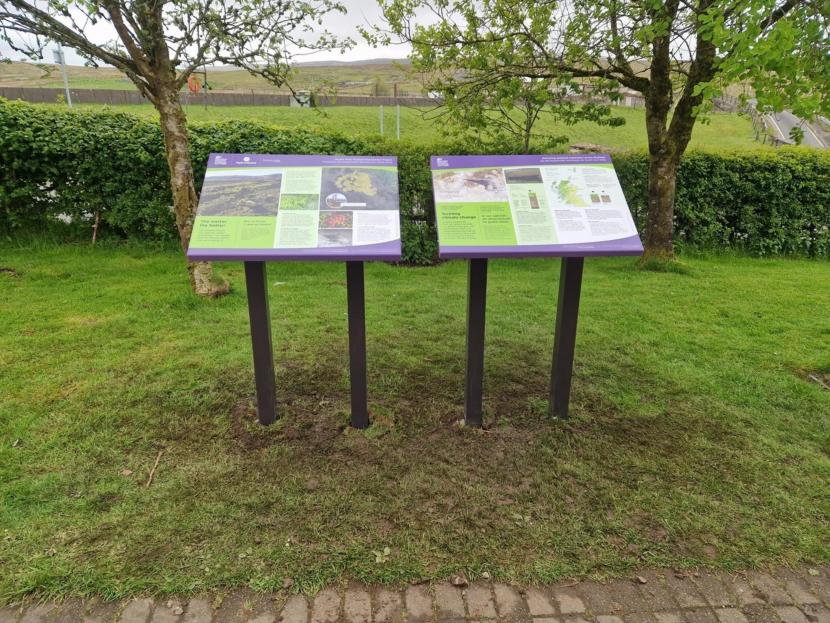
Interpretation panels funded by NatureScot Peatland ACTION
©Michael Holcombe/Inverclyde Council
For further information, or to get involved with Peatland ACTION
- We offer funding for suitable peatland restoration projects across Scotland
- We offer, where appropriate, multi-year funding
- We fund up to 100% of the capital costs
- We fund much of the pre-application work, for example, peat depth surveys and feasibility studies
- We have officers who can help design your project, offer advice on restoration management and assist you to complete your application and supporting information.
Peatland ACTION case studies: We demonstrate links between peat condition and: fisheries; grouse; carbon storage; wildlife; landscapes; human history; and so much more.
If you would like to contribute to the on-going work of Peatland ACTION please contact peatlandaction@nature.scot.
For further information: www.nature.scot/peatlandaction
